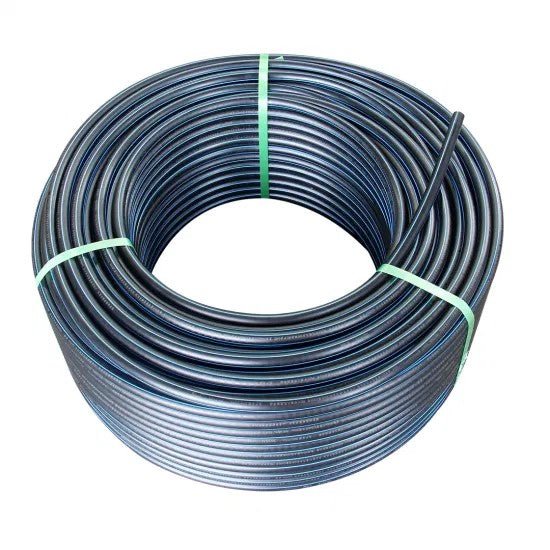Exploring American Plastics HDPE Pipe Manufacturing and Its Impact in Modern Infrastructure
Wiki Article
Understanding the Trick Advantages of HDPE Pipeline for Water and Wastewater Administration
Making use of HDPE pipe in water and wastewater monitoring provides numerous advantages that warrant consideration. Its outstanding resilience and lengthy lifespan make it a recommended choice for lots of projects. Furthermore, the material's resistance to rust and chemical damages enhances its dependability in numerous environments. Nonetheless, the benefits prolong past simply longevity and resistance. Discovering its cost-effectiveness and environmental impact exposes much more compelling reasons for its widespread adoption in contemporary frameworkRemarkable Sturdiness and Long Life

HDPE pipe stands apart for its outstanding longevity and long life, making it a recommended selection in water monitoring systems. Created from high-density polyethylene, these pipelines can hold up against substantial stress and stress, making sure trustworthy performance in time. Their robust nature allows them to sustain severe environmental conditions, consisting of temperature level changes and soil movements, which can create various other materials to fail.
The lifespan of HDPE pipes usually goes beyond half a century, offering an affordable service for municipalities and industries alike. In addition, the product's lightweight residential properties simplify installment, lowering labor expenses and durations. This toughness reduces the need for constant repair work or replacements, additionally enhancing its economic appeal.
In water monitoring applications, the dependability of HDPE pipelines indicates fewer disturbances and enhanced solution continuity, making them essential to sustainable framework growth. The mix of durability and longevity strengthens HDPE's role as a cornerstone in effective water management options.

Resistance to Rust and Chemical Damages
While numerous products yield to rust and chemical damages gradually, HDPE pipes show amazing resistance, making them ideal for numerous water management applications. This strength comes from the molecular structure of high-density polyethylene, which is naturally non-reactive and does not corrode like steels or degrade from direct exposure to harsh chemicals. Therefore, HDPE is extremely efficient in environments with aggressive materials, such as wastewater systems that may have acids, bases, and organic solvents.
Furthermore, HDPE pipelines can endure ecological variables such as soil acidity and saline conditions, better enhancing their viability for varied applications (Midland TX HDPE Pipe Fittings in Stock). Their capability to preserve architectural integrity in time minimizes the threat of leaks and failures, which is crucial in ensuring the security and dependability of water circulation and wastewater monitoring systems. Consequently, the resistance to corrosion and chemical damage noticeably adds to the overall efficiency and long life of HDPE piping solutions
Cost-Effectiveness and Financial Advantages
When taking into consideration the monetary effects of water monitoring systems, the cost-effectiveness of HDPE pipelines comes to be obvious. These pipelines use reduced setup and maintenance costs compared to traditional materials like steel or concrete. Their light-weight nature streamlines transport and setup, leading to reduced labor expenses. Additionally, HDPE pipelines show a long life expectancy, typically surpassing 50 years, which converts to less replacements and long-term financial savings.In addition, the resistance of HDPE to deterioration and chemical damages reduces the need for pricey repair services and replacements. The pipes additionally sustain effective water circulation, lowering energy costs connected with pumping systems. By alleviating leaks and water loss, HDPE pipelines add to substantial economic advantages for communities and industries alike. Overall, the first investment in HDPE piping can produce substantial economic returns over the life expectancy of the water management system, making it a sensible choice for lasting infrastructure advancement.
Ecological Sustainability and Minimized Impact

Convenience and Flexibility in Setup
As a result of their special properties, HDPE pipelines offer amazing versatility and versatility in installment, making them suitable for a variety of applications. linked here Their lightweight nature permits easier handling and transportation, minimizing labor prices and installation time. HDPE pipes can be bent and formed to fit various terrains and task needs, which is particularly useful in testing settings.Additionally, their resistance to corrosion and chemical damage permits installment in varied setups without the requirement for specialized safety coatings. The capability to fuse joints Resources develops a continual, leak-free system, boosting the total integrity and reliability of the installation. HDPE's versatility likewise fits ground motion, lowering the threat of damages in areas prone to shifting soil. In general, these attributes make HDPE pipelines not only flexible however likewise a favored option for water and wastewater administration systems.
Often Asked Questions
Exactly How Does HDPE Pipe Contrast to PVC in Water Management Applications?
HDPE pipeline offers superior versatility, resistance to deterioration, and resilience compared to PVC. Its lighter weight helps with much easier installment, while its lengthy lifespan reduces substitute prices, making HDPE a favored option in water management applications.What Is the Lifespan of HDPE Piping Under Regular Problems?
Under common conditions, HDPE pipes can have a life-span varying from 50 to 100 years. Their toughness and resistance to rust add to their lasting efficiency in various applications, making them a trustworthy option for facilities.Are HDPE Pipes Recyclable After Their Life Span?
Yes, HDPE pipes are recyclable after their service life. Pipe Supplier American Plastics Midland. They can be processed and repurposed into brand-new products, substantially you can try here reducing ecological influence and advertising sustainability within the industry, making them an eco-friendly choice for piping remediesWhat Is the Setup Refine for HDPE Pipeline?
The installation process for HDPE pipelines involves site prep work, trenching, pipe blend or mechanical joining, backfilling, and pressure screening. Proper methods assure a resilient and reliable system for delivering water and wastewater properly.Can HDPE Pipeline Be Utilized for Both Safe And Clean and Non-Potable Water Equipments?
Yes, HDPE pipelines can be used for both drinkable and non-potable water supply. Their convenience, sturdiness, and resistance to deterioration make them ideal for various applications, guaranteeing risk-free and reliable transport of water in different contexts.Report this wiki page